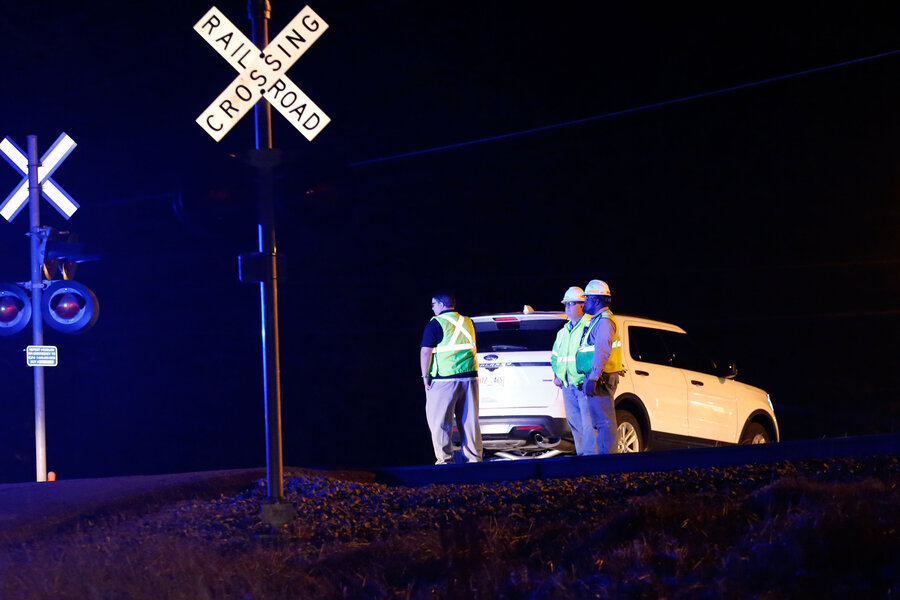Colorado family killed in Amtrak crash: How common are railroad-crossing collisions?
Loading...
| Denver
Three children and two adults were killed in Colorado on Sunday when an Amtrak passenger train collided with a minivan in Las Animas County in the southern part of the US state, state police said.
The minivan, carrying six people, was traveling northbound on a county road when the driver of the van "failed to yield right of way" to the westbound train, the Colorado State Patrol said in a statement.
The driver of the van and four passengers were killed, including three children under the age of 18, said State Patrol Trooper Josh Lewis.
A girl was airlifted to a Denver-area hospital with serious injuries, the state patrol said. No crew or passengers on the train were injured, it said.
Amtrak said there were 286 passengers on the Chicago to Los Angeles line. The train struck a vehicle that was on the tracks at roughly 9:45 a.m. near Trinidad, Colorado, about four miles (6.5 km) east of the Amtrak Trinidad station.
The train in Sunday's Colorado incident struck the right side of the vehicle, which was not stopped on the tracks, police said. The driver and passengers were all wearing seat belts or restraints, they said.
Neither alcohol nor drugs were thought to have played a role in the crash, police said.
The victims have not been publicly identified, pending the notification of relatives.
Amtrak said some of its equipment was damaged but crews quickly made repairs and the train resumed its journey.
The accident is a reminder of the importance of vigilance at railroad crossings.
“Trains cannot stop on a dime and so people need to realize that they are also a piece of the safety equation,” Carol Steckbeck, media consultant for Operation Lifesaver, which focuses specifically on railroad crossing safety, told The Christian Science Monitor last year after a 50 people were injured in a Metrolink crash in Southern California. As the Monitor's Daniel Wood reported at the time:
Collisions at crossings have dropped by 85 percent – from a high of more than 13,500 in 1978 to just over 2,000 in 2011, according to the FRA. The agency attributes the dramatic decrease to engineering improvements, better enforcement of traffic safety laws, and education of motorists. It estimates that 94 percent of grade crossing collisions and 87 percent of fatalities are the result of risky behavior by drivers or poor judgment.
For perspective, here are several statistics:
- Of the roughly 2,000 crossing collisions in 2013, nearly half (970) involved passenger vehicles, and 16 percent (336) involved tractor-trailers, according to Operation Lifesaver.
- 95 percent of rail-related deaths are due to crossing collisions or pedestrian trespass incidents, according to the FRA.
- While crossing collisions have plummeted since the 1970s, there has been an uptick in the past year, according to the FRA.





